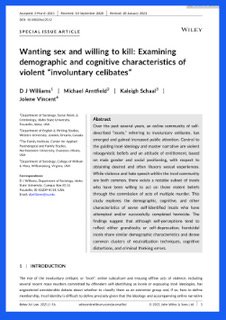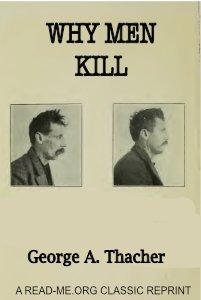By: D J Williams, Michael Arntfield, Kaleigh Schaal, Jolene Vincent
Over the past several years, an online community of self‐described “incels,” referring to involuntary celibates, has emerged and gained increased public attention. Central to the guiding incel ideology and master narrative are violent misogynistic beliefs and an attitude of entitlement, based on male gender and social positioning, with respect to obtaining desired and often illusory sexual experiences. While violence and hate speech within the incel community are both common, there exists a notable subset of incels who have been willing to act on those violent beliefs through the commission of acts of multiple murder. This study explores the demographic, cognitive, and other characteristics of seven self‐identified incels who have attempted and/or successfully completed homicide. The findings suggest that although self‐perceptions tend to reflect either grandiosity or self‐deprecation, homicidal incels share similar demographic characteristics and dense common clusters of neutralization techniques, cognitive distortions, and criminal thinking errors.
Behav Sci Law. 2021;1–16.











